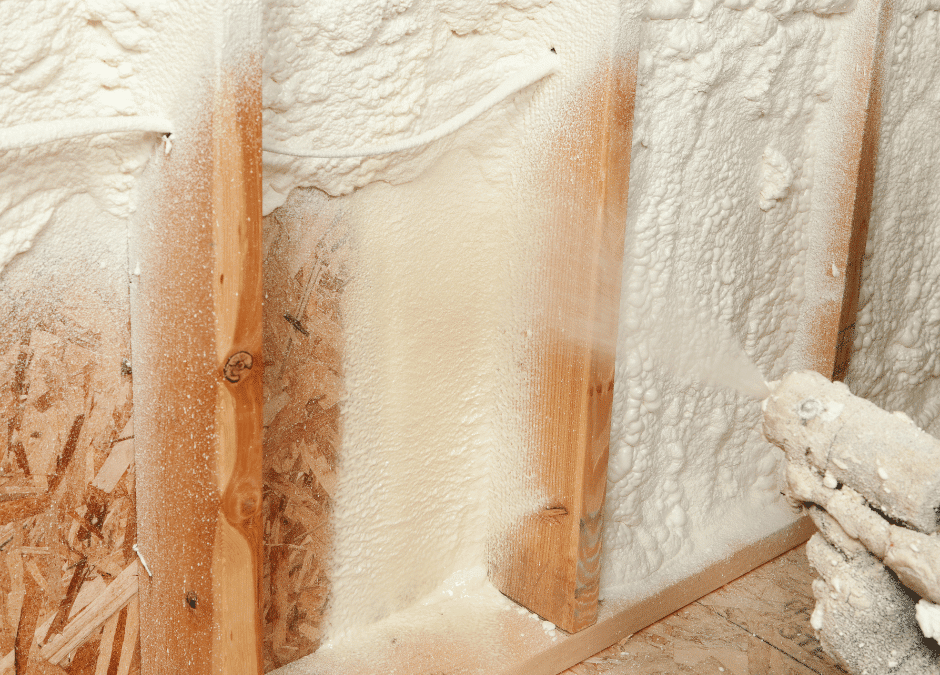Are you thinking about upgrading your home’s insulation? Blown-in insulation stands out for its efficiency and effectiveness, becoming a preferred choice for homeowners aiming to boost their home’s comfort while lowering energy expenses. This insulation method caters to a wide range of house designs and addresses various energy-saving needs. Its versatility and high performance in improving thermal regulation make it a go-to solution. Let’s delve into the distinctive attributes of blown-in insulation and weigh its advantages against its drawbacks.
What Is Blown-In Insulation?
Blown-in insulation, also known as loose-fill insulation, involves the method of blowing or spraying insulation materials into wall cavities, attics, and other difficult-to-reach spots. Commonly made from materials such as fiberglass, cellulose, or mineral wool, this technique creates an uninterrupted thermal barrier. This barrier is notably efficient in enhancing your home’s energy conservation and overall effectiveness against heat loss. Its ability to fill even the smallest of spaces makes it an exceptional choice for comprehensive home insulation.
What Are the Pros of Blown-In Insulation?
When considering insulation options, it’s clear that blown-in insulation stands out for several reasons. Let’s highlight the benefits that make it an appealing choice for many homeowners:
- Energy Efficiency: Blown-in insulation offers superior energy efficiency, filling in gaps and leaks more effectively than traditional insulation. This leads to significant savings on energy bills.
- Quick Installation: The process is fast and non-invasive, meaning your home won’t be turned into a construction zone. Professional installers can complete the job efficiently, minimizing disruption to your daily life.
- Versatile Application: This type of insulation is ideal for attics, wall cavities, and hard-to-reach areas, providing a comprehensive thermal barrier around your home.
- Noise Reduction: In addition to thermal insulation, blown-in insulation helps reduce outside noise, making your home quieter and more serene.
- Eco-Friendly Options: Many materials used for blown-in insulation, such as cellulose, are made from recycled materials, making this option more sustainable.
What Are the Cons of Blown-In Insulation?
Before diving into the potential drawbacks, it’s important to consider that while blown-in insulation offers numerous advantages, there are a few considerations you should be aware of. Here’s a rundown of the cons:
- Initial Cost: The upfront cost of blown-in insulation can be higher than other types. This is because specialized equipment and professional expertise are needed for installation.
- Professional Installation Required: Unlike some other forms of insulation, blown-in insulation must be installed by professionals to ensure it is applied correctly and evenly.
- Possible Settling Over Time: Over the years, blown-in insulation may settle, potentially diminishing its effectiveness. Regular checks can help identify and rectify this issue.
- Not Suitable for All Spaces: In some unique building structures, blown-in insulation might not be the best fit. It’s crucial to consult with a professional to assess its suitability for your home.
- Access Issues for Future Repairs: Once installed, blown-in insulation can make it harder to access wall cavities for electrical or plumbing repairs without disturbing the insulation.
How Does Blown-In Insulation Compare to Other Types?
Comparing blown-in insulation with alternatives like fiberglass batts reveals its superiority in coverage and energy efficiency. Its effectiveness is especially noticeable in irregularly shaped areas or spaces filled with obstructions where traditional insulation materials might fail to provide complete coverage. The method’s flexibility allows for a tailored approach to insulating homes, ensuring that every nook and cranny is protected from energy leaks. This unique advantage makes it a preferred option for homeowners looking for a thorough and effective insulation solution.
Is Blown-In Insulation Right for Your Climate?
Your local climate significantly influences the effectiveness of your insulation. Blown-in insulation’s adaptability makes it an excellent candidate for warm and cool climates, promising year-round energy efficiency and comfort. The choice of insulation material can be fine-tuned to your specific climate, maximizing the insulation’s performance and your home’s energy conservation. Whether you’re battling intense summer heat or frigid winter temperatures, blown-in insulation can be optimized to meet your environmental needs.
Installation Process: What to Expect
Expect a streamlined and efficient installation process when opting for blown-in insulation. Specialists will prepare your home, utilize specialized machinery to install the insulation precisely and check for uniform distribution. This professional approach minimizes any inconvenience, allowing you to quickly enjoy the benefits of your newly insulated home. The goal is to enhance your home’s energy efficiency with minimal disruption to your daily routine.
Maintenance and Upkeep of Blown-In Insulation
Fortunately, blown-in insulation requires minimal maintenance. However, periodic inspections are advisable to ensure that the insulation hasn’t settled or shifted, which could compromise its insulating effectiveness. These checks can be easily integrated into your regular home maintenance schedule, ensuring that your insulation continues to perform at its best.
Contact Us for Your Blown-In Insulation Needs
Blown-in insulation offers a transformative solution for enhancing home efficiency and comfort. At Green Smart Insulation, we specialize in providing top-notch blown-in insulation services tailored to your needs. With our expertise, you can significantly reduce your energy bills, increase your property’s value, and contribute to a healthier planet. Reach out to us today to discover how we can help you achieve a more comfortable, energy-efficient home with blown-in insulation.


Recent Comments